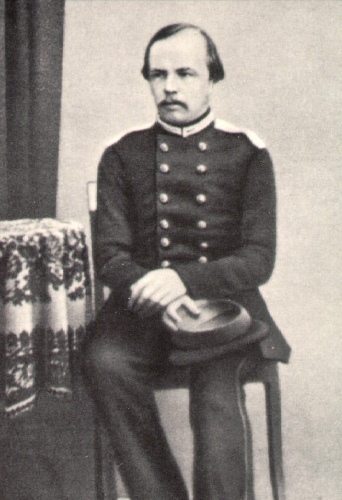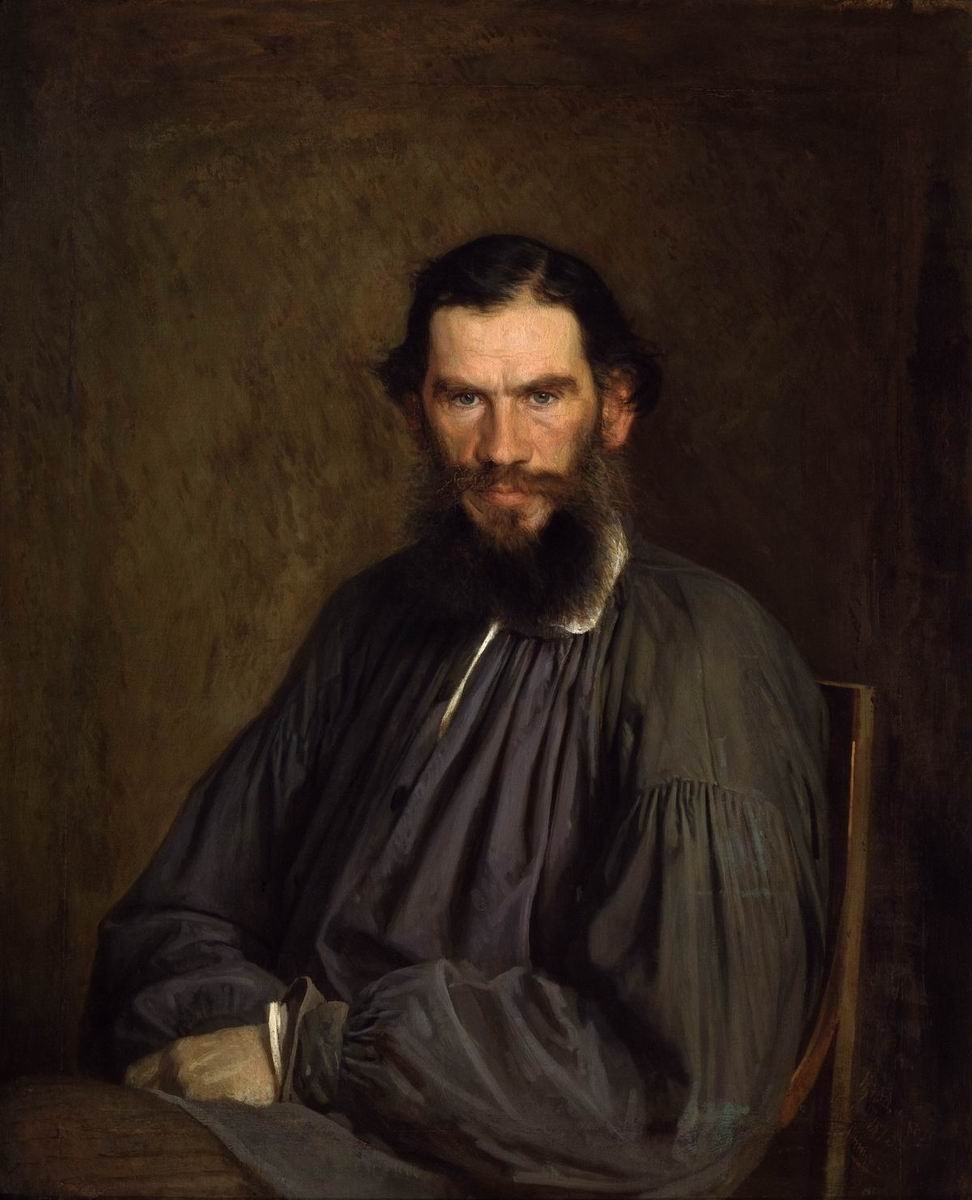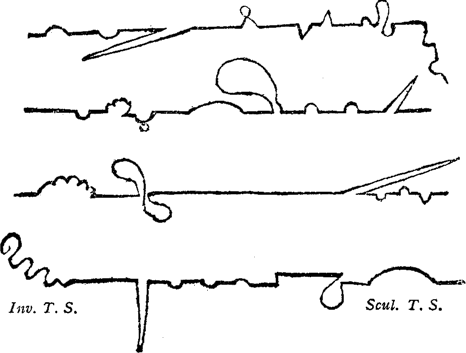|
Foreshadowing
Foreshadowing is a narrative device in which a storyteller gives an advance hint of what is to come later in the story. Foreshadowing often appears at the beginning of a story, and it helps develop or subvert the audience's expectations about upcoming events. The writer may implement foreshadowing in many different ways. Some of these ways include: character dialogues, plot events, and changes in setting. Even the title of a work or a chapter can act as a clue that suggests what is going to happen. Foreshadowing in fiction creates an atmosphere of suspense in a story, so that the readers are interested and want to know more. This literary device is generally used to build anticipation in the minds of readers about what might happen next, thus adding dramatic tension to a story. Moreover, foreshadowing can make extraordinary and bizarre events appear credible, some events are predicted in order to make the audience feel anticipated for them. Hints may be about future events, cha ... [...More Info...] [...Related Items...] OR: [Wikipedia] [Google] [Baidu] |
Chekhov's Gun
Chekhov's gun (Chekhov's rifle; russian: Чеховское ружьё) is a narrative principle that states that every element in a story must be necessary, and irrelevant elements should be removed. Alternatively explained, suppose a writer features a gun in a story; if the writer features it, there ''must'' be a reason for it, such as it being fired sometime later in the plot. All elements must eventually come into play at some point in the story. Background The principle is recorded in letters by Anton Chekhov several times, with some variation; it was advice for young playwrights. Ernest Hemingway mocked the principle in his essay "The art of the short story", giving the example of two characters that are introduced and then never mentioned again in his short story " Fifty Grand". Hemingway valued inconsequential details, but conceded that readers will inevitably seek symbolism and significance in them. Writer Andrea Phillips noted that assigning a single role for every detail ... [...More Info...] [...Related Items...] OR: [Wikipedia] [Google] [Baidu] |
Narrative Device
A plot device or plot mechanism is any technique in a narrative used to move the plot forward. A clichéd plot device may annoy the reader and a contrived or arbitrary device may confuse the reader, causing a loss of the suspension of disbelief. However, a well-crafted plot device, or one that emerges naturally from the setting or characters of the story, may be entirely accepted, or may even be unnoticed by the audience. Stories using plot devices Many stories, especially in the fantasy genre, feature an object or objects with some great magical power, such as a crown, sword, or jewel. Often what drives the plot is the hero's need to find the object and use it for good, before the villain can use it for evil, or if the object has been broken by the villains, to retrieve each piece that must be gathered from each antagonist to restore it, or, if the object itself is evil, to destroy it. In some cases destroying the object will lead to the destruction of the villain. In the I ... [...More Info...] [...Related Items...] OR: [Wikipedia] [Google] [Baidu] |
Flashforward
A flashforward (also spelled flash-forward, and more formally known as prolepsis) is a scene that temporarily takes the narrative forward in time from the current point of the story in literature, film, television and other media. Flashforwards are often used to represent events expected, projected, or imagined to occur in the future. They may also reveal significant parts of the story that have not yet occurred, but soon will in greater detail. It is similar to foreshadowing, in which future events are not shown but rather implicitly hinted at. It is also similar to an ellipsis, which takes the narrative forward and is intended to skim over boring or uninteresting details, for example the aging of a character. It is primarily a postmodern narrative device, named by analogy to the more traditional flashback, which reveals events that occurred in the past. Literature An early example of prolepsis which predates the postmodern period is Charles Dickens' novel '' A Christmas C ... [...More Info...] [...Related Items...] OR: [Wikipedia] [Google] [Baidu] |
Kill Screen
''Kill Screen'' (stylized as ''KILL SCREEN'') was a print and online magazine founded in 2009 by Jamin Warren and Chris Dahlen and owned by Kill Screen Media, Inc. It focused on video games and culture, but also included articles based on entertainment. The name is based on the video game term of the same name. In 2009, both Warren and Dahlen were former writers for ''Pitchfork'' when they decided to found the magazine. After a successful Kickstarter campaign to fund the magazine, the first issue was released in March 2010. After partnerships with ''Pitchfork'', StoryCode and Film Society of Lincoln Center, the magazine eventually founded an annual video game conference, two5six, in 2013. The magazine's website did a redesign in January 2014 and the print magazine itself was redesigned and overhauled after a second successful Kickstarter campaign in November 2015. In 2016, two5six's name was changed to Kill Screen Festival. After 2016, Kill Screen ceased publication, and its ... [...More Info...] [...Related Items...] OR: [Wikipedia] [Google] [Baidu] |
Fyodor Dostoevsky
Fyodor Mikhailovich Dostoevsky (, ; rus, Фёдор Михайлович Достоевский, Fyódor Mikháylovich Dostoyévskiy, p=ˈfʲɵdər mʲɪˈxajləvʲɪdʑ dəstɐˈjefskʲɪj, a=ru-Dostoevsky.ogg, links=yes; 11 November 18219 February 1881), sometimes transliterated as Dostoyevsky, was a Russian novelist, short story writer, essayist and journalist. Dostoevsky's literary works explore the human condition in the troubled political, social, and spiritual atmospheres of 19th-century Russia, and engage with a variety of philosophical and religious themes. His most acclaimed novels include '' Crime and Punishment'' (1866), '' The Idiot'' (1869), ''Demons'' (1872), and '' The Brothers Karamazov'' (1880). His 1864 novella, '' Notes from Underground'', is considered to be one of the first works of existentialist literature. Numerous literary critics regard him as one of the greatest novelists in all of world literature, as many of his works are considered highly i ... [...More Info...] [...Related Items...] OR: [Wikipedia] [Google] [Baidu] |
Leo Tolstoy
Count Lev Nikolayevich TolstoyTolstoy pronounced his first name as , which corresponds to the romanization ''Lyov''. () (; russian: link=no, Лев Николаевич Толстой,In Tolstoy's day, his name was written as in pre-reformed Russian. ; ), usually referred to in English as Leo Tolstoy, was a Russian writer who is regarded as one of the greatest authors of all time. He received nominations for the Nobel Prize in Literature every year from 1902 to 1906 and for the Nobel Peace Prize in 1901, 1902, and 1909; the fact that he never won is a major controversy. Born to an aristocratic Russian family in 1828, Tolstoy's notable works include the novels '' War and Peace'' (1869) and '' Anna Karenina'' (1878), often cited as pinnacles of realist fiction. He first achieved literary acclaim in his twenties with his semi-autobiographical trilogy, '' Childhood'', '' Boyhood'', and ''Youth'' (1852–1856), and '' Sevastopol Sketches'' (1855), based upon his experiences ... [...More Info...] [...Related Items...] OR: [Wikipedia] [Google] [Baidu] |
Reveal (narrative)
The reveal (also known as the big reveal) is a plot device in narrative structure and is the exposure to the reader or audience of a previously unseen key character, or element of plot or performance. A reveal is different from Aristotle's ''anagnorisis'', in which something is revealed to a character rather than to the audience. Narrative The reveal may result in a plot twist and could be the key plot turn or unexpected coda in the story; for example, in the mystery genre. It may have scenes in the future that reveal consequences of actions to provide a lead for what will occur in the plot or side plot. This may be the overarching plot line in a mystery or soap opera. It may also be used as a device (particularly in the climax) in stage magic by an illusionist or escape artist. Stage magic In a magician's act, "the reveal" may refer to * the normal culmination of a trick * the unexpected (to the audience) culmination of the trick * an explanation of the trick, which itself may ... [...More Info...] [...Related Items...] OR: [Wikipedia] [Google] [Baidu] |
Anachronism
An anachronism (from the Greek , 'against' and , 'time') is a chronological inconsistency in some arrangement, especially a juxtaposition of people, events, objects, language terms and customs from different time periods. The most common type of anachronism is an object misplaced in time, but it may be a verbal expression, a technology, a philosophical idea, a musical style, a material, a plant or animal, a custom, or anything else associated with a particular period that is placed outside its proper temporal domain. (An example of that would be films including non-avian dinosaurs and prehistoric human beings living side by side, but they were, in reality, millions of years apart.) An anachronism may be either intentional or unintentional. Intentional anachronisms may be introduced into a literary or artistic work to help a contemporary audience engage more readily with a historical period. Anachronism can also be used intentionally for purposes of rhetoric, propaganda, comedy, ... [...More Info...] [...Related Items...] OR: [Wikipedia] [Google] [Baidu] |
Nonlinear Narrative
Nonlinear narrative, disjointed narrative, or disrupted narrative is a narrative technique, sometimes used in literature, film, video games, and other narratives, where events are portrayed, for example, out of chronological order or in other ways where the narrative does not follow the direct causality pattern of the events featured, such as parallel distinctive plot lines, dream immersions or narrating another story inside the main plot-line. Most of the time, it is used to mimic the structure and recall of a character, but has been used for other reasons as well. Literature Beginning a non-linear narrative '' in medias res'' (Latin: "into the middle of things") began in ancient times and was used as a convention of epic poetry, including Homer's ''Iliad'' in the 8th century BC. The technique of narrating most of the story in flashback is also seen in epic poetry, like the Indian epic the ''Mahabharata''. Several medieval ''Arabian Nights'' tales such as " The City of Brass ... [...More Info...] [...Related Items...] OR: [Wikipedia] [Google] [Baidu] |
Film
A film also called a movie, motion picture, moving picture, picture, photoplay or (slang) flick is a work of visual art that simulates experiences and otherwise communicates ideas, stories, perceptions, feelings, beauty, or atmosphere through the use of moving images. These images are generally accompanied by sound and, more rarely, other sensory stimulations. The word "cinema", short for cinematography, is often used to refer to filmmaking and the film industry, and to the art form that is the result of it. Recording and transmission of film The moving images of a film are created by photographing actual scenes with a motion-picture camera, by photographing drawings or miniature models using traditional animation techniques, by means of CGI and computer animation, or by a combination of some or all of these techniques, and other visual effects. Before the introduction of digital production, series of still images were recorded on a strip of chemically sens ... [...More Info...] [...Related Items...] OR: [Wikipedia] [Google] [Baidu] |
Literature
Literature is any collection of written work, but it is also used more narrowly for writings specifically considered to be an art form, especially prose fiction, drama, and poetry. In recent centuries, the definition has expanded to include oral literature, much of which has been transcribed. Literature is a method of recording, preserving, and transmitting knowledge and entertainment, and can also have a social, psychological, spiritual, or political role. Literature, as an art form, can also include works in various non-fiction genres, such as biography, diaries, memoir, letters, and the essay. Within its broad definition, literature includes non-fictional books, articles or other printed information on a particular subject.''OED'' Etymologically, the term derives from Latin ''literatura/litteratura'' "learning, a writing, grammar," originally "writing formed with letters," from ''litera/littera'' "letter". In spite of this, the term has also been applied to spok ... [...More Info...] [...Related Items...] OR: [Wikipedia] [Google] [Baidu] |
Narrative
A narrative, story, or tale is any account of a series of related events or experiences, whether nonfictional ( memoir, biography, news report, documentary, travelogue, etc.) or fictional (fairy tale, fable, legend, thriller Thriller may refer to: * Thriller (genre), a broad genre of literature, film and television ** Thriller film, a film genre under the general thriller genre Comics * ''Thriller'' (DC Comics), a comic book series published 1983–84 by DC Comics i ..., novel, etc.). Narratives can be presented through a sequence of written or spoken words, through still or moving images, or through any combination of these. The word derives from the Latin verb ''narrare'' (to tell), which is derived from the adjective ''gnarus'' (knowing or skilled). Narration (i.e., the process of presenting a narrative) is a rhetorical modes, rhetorical mode of discourse, broadly defined (and paralleling argumentation, description, and exposition (narrative), exposition), is one of f ... [...More Info...] [...Related Items...] OR: [Wikipedia] [Google] [Baidu] |





